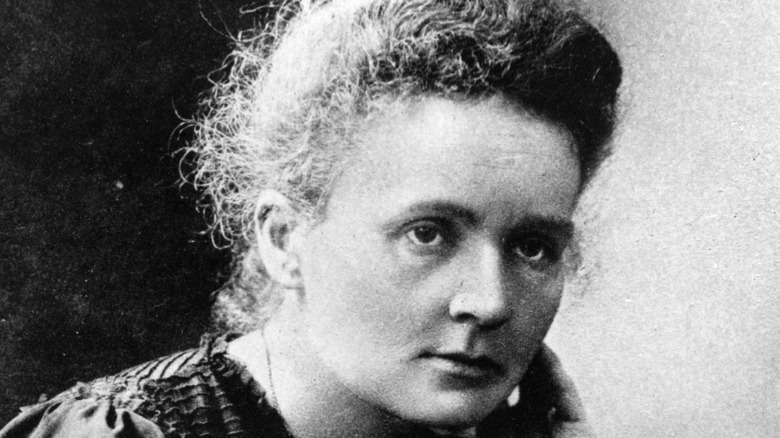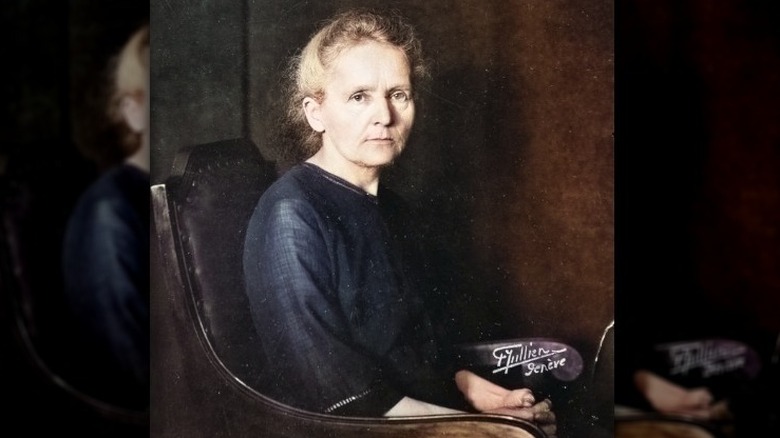This Colorized Photo Will Change How You Look At Marie Curie
Before becoming the first woman to win a Nobel Prize, Marie Curie was a poor Polish girl who dreamed of going to university (via Biography). She worked for years as a tutor and governess to afford to do so and finally made her way to the Sorbonne in Paris in 1891 to study physics and math, BBC reports. It's here that she met Pierre, a French physicist, and the couple married shortly after. Impressed by another physicist, Henri Becquerel, Curie began to build on his work (per Smithsonian Magazine). History states that this led her to discover the radioactive elements polonium and radium in 1898.
The Curies began to work together as a team, and in 1903, they — along with Becquerel — were awarded the Nobel Prize in Physics. Pierre later became a full-time professor at the Sorbonne. Per the Nobel Prize, his tragic death in 1906 had Curie taking over his position, making her the first female professor in the university's history. By 1911, she had won her second Nobel Prize in Chemistry. Despite what is now known about the dangers of radiation, Curie herself was unaware and denied there was any health risk in her work (via The New York Times).
Marie Curie in color
This colorized photo is undated, but it can be assumed it was taken in Marie Curie's later years. Though a renowned physicist and chemist, she appears to be a frail grandmother-like figure. With her simple garb, frizzy hair, and clasped hands, one can tell that Curie is not in this for the glory or notoriety; this is strictly about science and nothing else. The BBC states that despite her discoveries, Curie faced opposition from male scientists and was never properly financially compensated for her work. Indeed, her wrinkled face presents a woman who has battled to get where she is, and her fragile stance hints at ill health.
Known for carrying test tubes of radium in her lab coat, Curie's health declined in the late 1920s (via Biography). According to Stanford University, she began to suspect that radium was deadly when two of her coworkers died of blood disease. Curie began to lose her vision, and her injuries (including a broken wrist and burns) were not healing properly. Per The New York Times, the body mistakes radium for calcium when absorbed, which can cause tumors, anemia, or leukemia. Curie was getting too ill to work, and on July 4, 1934, she died at the age of 66. It's believed she had aplastic anemia brought on from years of radium exposure.

